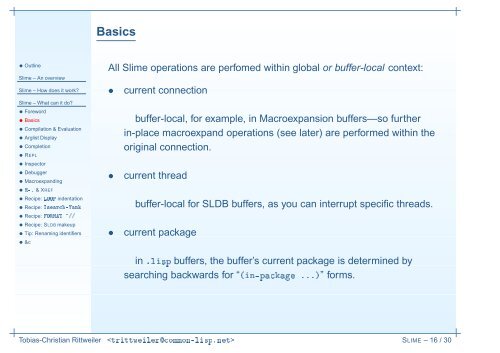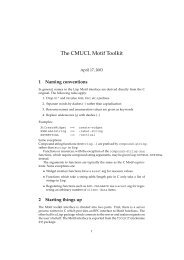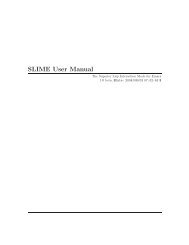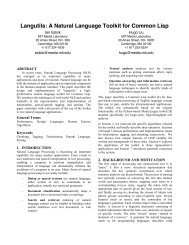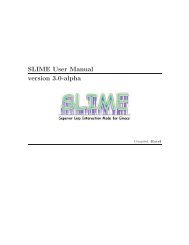SLIME Superior Lisp Interaction Mode for Emacs - Common Lisp.net
SLIME Superior Lisp Interaction Mode for Emacs - Common Lisp.net
SLIME Superior Lisp Interaction Mode for Emacs - Common Lisp.net
Create successful ePaper yourself
Turn your PDF publications into a flip-book with our unique Google optimized e-Paper software.
Basics• OutlineSlime – An overviewSlime – How does it work?Slime – What can it do?• Foreword• Basics• Compilation & Evaluation• Arglist Display• Completion• REPL• InspectorRecipe:ÇÊÅÌ»»Recipe:Á×Ö¹Ò• Debugger• Macroexpanding•Å¹º& XREF• Recipe:ÄÇÇÈindentation••All Slime operations are perfomed within global or buffer-local context:• current connectionbuffer-local, <strong>for</strong> example, in Macroexpansion buffers—so furtherin-place macroexpand operations (see later) are per<strong>for</strong>med within theoriginal connection.• current threadbuffer-local <strong>for</strong> SLDB buffers, as you can interrupt specific threads.• Recipe: SLDB makeup• Tip: Renaming identifiers• &c• current packageinºÐ×Ôbuffers, the buffer’s current package is determined bysearching backwards <strong>for</strong> “´Ò¹Ôºººµ” <strong>for</strong>ms.Tobias-Christian Rittweiler <strong>SLIME</strong>– 16 / 30


